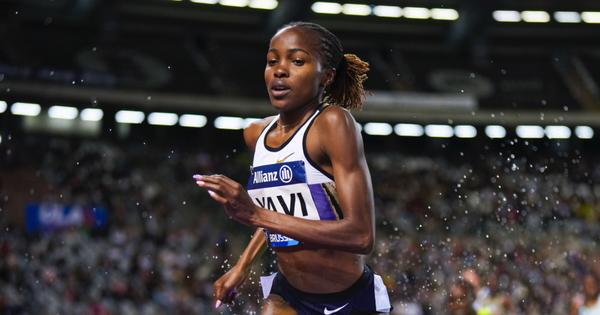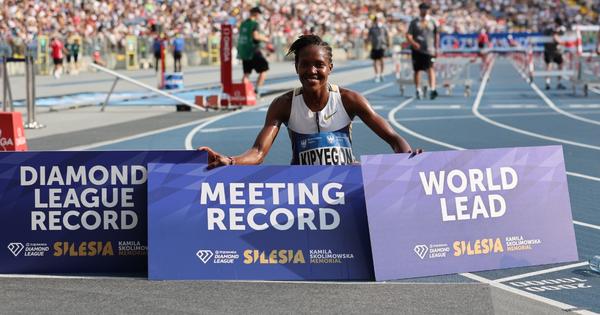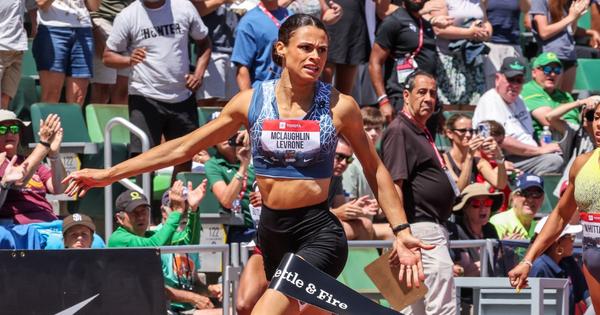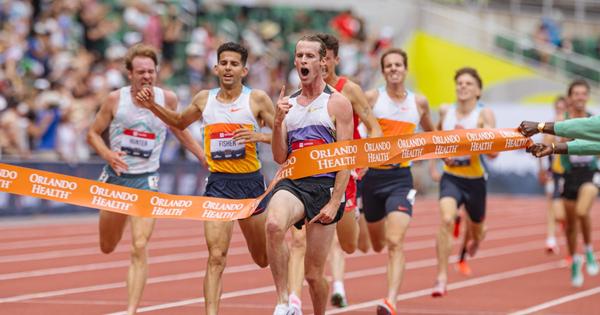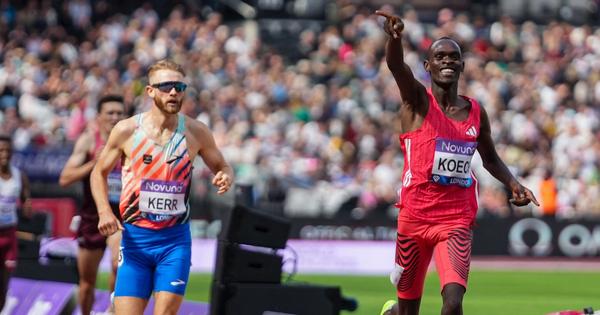By David Melly
August 27, 2025
If you tuned into Brussels midway through the program last week, you may have wondered: “Why’d they stop halfway through the steeplechase?”
That’s because World Athletics and their star guinea pig, Olympic champ Winfred Yavi, were testing out a new event, the steeplechase mile, to gauge its viability for inclusion (replacement?) in future championships. Yavi went out quickly into uncharted territory, hitting 800 meters in 2:13.3 and coming back to run 4:40.13, a time that meet organizers brazenly called a “world record” even though it won’t be officially considered a real event until next year. It’s also worth noting that Yavi’s time works out to roughly the same pace (69-high for 400m) as Yavi’s PB over 3000m, nearly twice the distance, so the mark certainly will fall more as runners of Yavi’s caliber get accustomed to the event.
The reviews on the Internet and in the group chat were mixed . On one hand, it’s a bit of an “if it ain’t broke, don’t fix it” as the steeplechase is hardly one of the longer distance events and is full of entertaining moments. On the other, WA deserves some credit for actively working to improve its product, even if some of its solutions are loony.
As you noodle on the place, or lack thereof, for the steeplechase mile in professional track and field, it’s only fair that we present both sides of the argument and let you decide for yourselves.
Pros : A shorter steeplechase presents more of an opportunity for two things fans love: unexpected carnage, and tactical brilliance. In an event that’s supposed to require both fitness and technique, the steeplechase on the global level, especially on the women’s side, can often still result into the strongest runner with garbage form simply running away from the pack. Everyone loves a championship 1500m, and adding barriers into the mix would only improve the odds of an upset or a dramatic finish. Plus, hurdling at higher speeds requires better form, and would either cause athletes to improve their technique closer to that of a 400m hurdler or create all sorts of entertaining chaos.
Cons : The 3000-meter distance already balances the need for strength, speed, and finesse, and especially in championship settings, the longer distance creates more opportunities for athletes to pick their attack strategy. A mile would likely be reduced to a footrace from the gun or a blistering last lap, but in a 3000m, steeplers often make their moves with 1km to go, two laps (the ol’ Kenneth Rooks approach), or down the last backstretch. And different styles of runners pressing at different times keeps the back half of a steeple far more engaging than, say a 5000m. Plus, the steeplechase distance landing in between the 1500m and the 5000m entices all kinds of runners to give it a shot, rather than simply directing the guy who keeps getting fourth in his nation’s 1500m trials to take up the hurdles.
The verdict is… up to you. But in our minds, the Brussels event failed to prove any argument conclusively. Perhaps that does necessitate a larger sample size or steeplechase miles at future pro meets, but for the good of the sport, it’d be better to view those events as additive, rather than replacing the 3000m steeple, before any final championship-level decision is made.

David Melly
David began contributing to CITIUS in 2018, and quickly cemented himself as an integral part of the team thanks to his quick wit, hot takes, undying love for the sport and willingness to get yelled at online.
